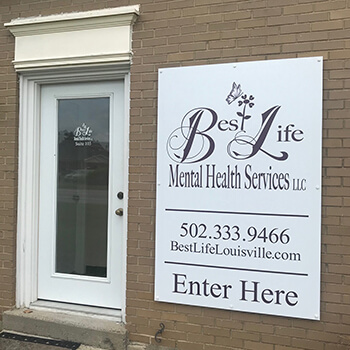Often times when doing work with a client, we are focusing a lot on processing events from the past or thinking about how to realistically anticipate the future. In order to make this real, we may focus on details about what they remember about the past or what they think will happen in the future. In this way, we are making that event or experience feel real in the room— we may talk about the things that a person was tasting as they had their last panic attack or we could think about the loud sounds of the concert hall that a client is dreading attending. We often times will get in-depth as a form of exposure that will help the client to become desensitized to the triggering aspects of that experience, while they are in the safe space of the therapy office.
When this is done, therapists are careful and observant during this process. We are observing client’s body language, their emotionality (sometimes, the lack thereof), their vocal tone, their eye contact— we are gauging how present they are in the room. Thinking about painful times evokes sensory experiences for us all at times, and a therapist is watching to be able to bring you back to the therapy room mentally and emotionally when it is necessary. We are not in the business of leaving clients open and vulnerable without ways to defend themselves.
This process of going somewhere difficult in our thoughts and feelings can happen anywhere, though. When we are experiencing a considerable level of distress— think processing a sudden death— we can have a hard time staying focused on the here and now. Similarly, when we have experienced traumatic events and there are certain cues or reminders (read: triggers) that happen in our present-day life, we can float back to a distressful time and place in our minds. Finally, if we experience anxious thoughts or worry about the future, we can become wrapped up in the “what-ifs” and lose track of the moment we are in. And it can feel so very real.
For this reason, we have grounding techniques. Grounding techniques can be a distraction from the thoughts and ultimately help us to become re-oriented in the here and now. Some grounding techniques we can practice ourselves, such as meditation or with electronic guidance such as useful apps. Others are most helpful when someone is able to tell that you have been triggered and prompts a return to the present. It is important in grounding to prioritize the message of safety in the here and now.
THE 5-4-3-2-1 METHOD

This is very simple. Remember your 5 senses? Hearing, touch, smell, sight and taste. We’re going to use them all in no specific order:
We are going to take a moment to honor the safe place that you are currently in. We are going to do this by increasing our awareness of the details that we are sensing in this space.
Stop and notice five things that you currently hear…
Now, notice four things that you can feel with your body and skin…
Now, become aware of three smells in this safe space…
Are there two things that you see around you right now?
And finally, can you name one thing that you taste?
That’s it! Easy, but very effective! This coupled with a little bit of body movement in the same space is a great combination to anchor yourself or assist someone else when they have gone somewhere else mentally.


